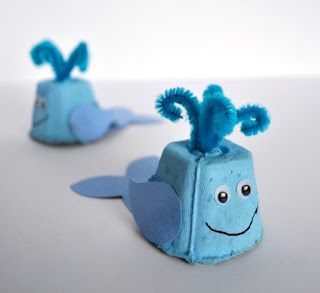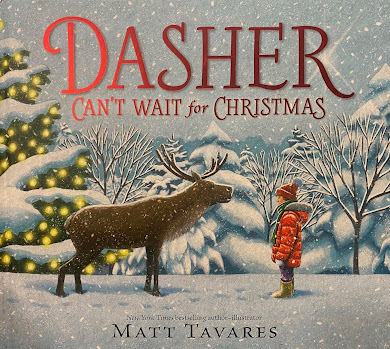If Christmas falls in winter as it does in the US and other northern hemisphere nations, then outdoor activities will be hard. But there are plenty of things to be done inside that are stimulating and fun. In Australia, traveling to catch up with family and friends, the beach, hiking, boating, fishing and more take up lots of time. But there is still time to fill at home because some children end up home while parents go to work for at least part of the holidays.
At Christmas, many families have ongoing traditions that you continue in families or schools. One special tradition in our family is to make the traditional English Plum Pudding using a recipe passed down on my mother’s side first used by her English and Scottish ancestors in the 1800s. Family legend is that one of our relatives worked as a cook in Holyrood Palace in Edinburgh and that the recipe was passed down to family members generation by generation. I used to make the pudding as a child with my grandfather and I’ve carried that tradition on first with one of my daughters, and these days also a second pudding with one of my granddaughters. Perhaps you have your own traditions?
I've written a number of posts in the past about things to do in the holidays with kids (here), as well as simple travel games to fill the time on trips with your children (here). There is also an earlier post on ‘Planning With Kids’ that offers '20 Great Holiday or Travel Activities for Kids (5-15)'. To maintain some balance, you might also read my post on why 'Boredom is still good for children!'.
In this post, I thought I'd revisit some of the ideas and add a few new ones. Holidays offer an opportunity to stimulate your children's minds, and help prepare them for another year of school in 2023.
My criteria for choosing holiday activities are that they should:
- Stimulate creativity
- Encourage exploration and discovery
- Involve using hands as well as their minds
- Encourage interaction between you and your children
- Foster language and literacy development
- Increase their knowledge
- Keep them interested
1. An Excursion
2. Why not get your children to create an animation, with one of many apps.
This sounds a big deal but it's not with the right app. I wrote a post about some wonderful apps for digital story telling a few years ago (HERE). One of my favourites is 'Puppet Pals. For one thing, it's VERY easy to use. Your children will work it out in minutes. Puppet Pals is available as a free app for the iPod Touch, iPhone and iPad. Most apps are available for other devices as well. It's essentially a simple way to create an animated movie using 'cut-out' themed characters and a variety of backdrops and scenes to create an animated 'puppet' play.
There is a free version that comes with Wild West backgrounds and actors. However, you can also purchase different themes for as little as $US0.99 or the 'Director's Cut' in which you can access all the themes for $US2.99. These allow you to obtain a range of additional scenarios and characters based on themes such as monsters, space, pirates, arthropod armada, Christmas and so on. You can even make your backdrops and characters.
It's a very simple app to use that provides very easy
story boarding. You can record dialogue, move characters around, create some
simple effects, change backdrops and settings and characters. While ideally,
before creating the animation, the writer/producer prepares plot summaries and
story ideas, but I've seen my grandchildren make excellent animations on their
first take. One they used is the 'Arthropod Armada' theme from 'Director's
Cut'.
As a teacher, I also could see myself using a smart board to collaboratively
develop a story with my class before introducing individuals and groups to this
smart little app.
3. Books with a difference
a) Pick some special books they haven't seen - try to borrow or buy at least 2 books for each child. Based on their interests try to choose books they'll enjoy, not simply books you'd like them to read. Opportunity shops, book exchanges and libraries are also a great place to start looking for some cheap second hand books. I have another post on book exchanges, op shops and web exchange sites here. Alternatively, take them to your local library to choose some.
b) Use
Books as a creative stimulus - While the sheer joy of the book is
usually enough, sometimes books can stimulate many wonderful creative
activities. For example:
After reading Maurice Sendak's "Where
the Wild Things are" go outside and dramatise it. Let one child be Max
and let others take turns at being the wild things. Make a boat out of bits of
wood, or even have a go at making one out of a large cardboard box (or
several).
After reading Jeannie Baker's book "Where the Forest Meets the Sea" (a book about the Daintree Rainforest in which all the pictures are collage), encourage them to make a collage out of natural materials (and maybe some wool, straws etc to supplement) in response to Baker's pictures. Or read a second book and have them use collage in response.
Or after reading Graeme Base's "The
Waterhole" get them to paint the waterhole (they can draw the
animals, cut them out and paste them around the waterhole).
4. Dramatisation
Dramatisation is an excellent way to respond to a book. If you have a dress-up box all the better. Let your children either re-tell the story through dramatisation or improvise. Get involved to help set the pattern for turn taking etc. I play a mean wolf, and an even better Grandma!
5. Writing with a difference
Introduce children aged from 5 to diaries or holiday journals.
a) Scrapbooks & journals - Make this fun, not a school activity. Some might prefer to just make a holiday scrapbook by pasting in tickets, leaves they collect, food wrappers etc. But you can also show them how to create a travel diary.
b) A
holiday blog - Tech savvy mums and dads might encourage their
children to write online. Why not set up a family blog that can be read by
friends and relatives (even if only for two weeks). You could use this as part
of a trip away, or just use it at home. Older children could set up the blog
themselves and all family members could contribute. Let them have access to a
digital camera and a scanner and the sky is the limit. See my post on 'Children
as bloggers' (here).
c) Start a family joke or riddle book -
Maybe offer them some jokes as models ("Knock, knock", "Why did
the centipede cross the road"....) etc.
6. Craft
a) Structured Craft ideas - simple beadwork,
noodle craft, mask making, making plaster moulds (and painting them), anything
for young children that requires paper tearing, gluing, glitter, stickers,
works well.
b) Unstructured creative craft - Stock up when you go to the
supermarket with simple materials like paper plates (good for masks), brown
paper bags, sticky tape, glue, cotton balls, tooth picks, paper cupcake
holders, straws (cutting up and threading), noodles (for threading).
c) Play dough - You can buy cheap coloured modelling clay
but home-made playdough works well. My wife 'Carmen's can't fail' recipe is 1
tablespoon of oil, 1 cup of plain flour, 0.5 cup of cooking salt, 2 tablespoons
Cream of Tartar, 1 cup of water, colouring. Mix together and put in a saucepan
on medium heat until it binds together, stirring all the time. Fold together by
hand. If you keep it in a sealed plastic bag it will last for ages in or
outside the fridge.
There are endless things to do with play dough. Try to move
beyond just cutting out shapes (which kids still love). Encourage them to make
a house, a farmyard, a bed, and an aquarium. Use some plastic animals with the
play dough or small plastic people. If you don't mind tossing the play dough
out you can let them use sticks, plants etc to make simple dioramas. Kids will
create complex stories as they manipulate the play dough.
7. Creative Play
I've written a number of previous posts on play (here) but planning for play is important.
While you can say to your children go outside and 'play', doing some simple
planning at times will lead to more stimulating play times.
a) Dress-up box - If you don't have one take the kids
to an Op shop to start one. You might even pick up some gems like old helmets,
hats, belts (you can cut them down), handbags etc.
b) Water play - This is hard in cold weather, but maybe you could
make bath-time special for young children with extra bubbles, different stuff
to take into it. In warmer weather give them a bucket of water and some things
to scoop, sieve etc - obviously only UNDER SUPERVISION. Above, it's pick on
Grandad day!
c) Build a cubby house - No not
with wood, just use a table, some chairs, wardrobes (hitch the blankets into
the top of the doors, some pegs and sheets and blankets. By draping them over
other objects you should be able to create a special space (about 2x2 metres is
enough for three small kids). Or you could try your hand at making one from large cardboard boxes. I've done both types and the fun was the same on both occasions.
Try to get at least 1.5 metres of height. Have the kids 'help' and then get them to collect some special things to have in the cubby.
I used to let my grandchildren have my cheap transistor radio from my shed (lots of fun). We also had a tea set. Sometime they had toys with them and games. If you're up to it, climb in as well and read some stories. I've seen a cubby of this kind amuse kids for half a day. Then of course for the adventurous you can share some snack food as well. You can even build a cubby inside! See my post on cubbies (here).
d) Indoor and back yard fun
Treasure hunts - Write the clues on paper using words and pictures depending on ages and make the treasure worthwhile (chocolate, a coupon for an ice cream in the kitchen etc). For something a little more challenging why not try a map with grid references (see picture opposite).
e) Cooking
Kids love cooking with their mothers or fathers. Do simple stuff. Nicole (Planning With Kids) has lots of great ideas for cooking with kids on her site. Don't forget to make it a language activity as well by getting them to follow the recipes.
Wrapping up - A few basics hints
- Have a strategy for the holidays - map out a timetable (post it on the wall) and try to plan a few significant events and think through the general structure of each day.
- If you have younger children still at home, being joined by school kids on holidays, try to think about how you will cope with all their interests and think about varying daily routines a little.
- Pace yourself - don't use all your best ideas in the first few days (you'll wear them and yourself out and you'll struggle to keep up the variation later).
- Expect bad weather - think about some ideas that will work in rainy weather as well. It's called the "Law of Holidays" - expect lots of wet weather and a day or two of sick kids.
HAVE FUN!






























